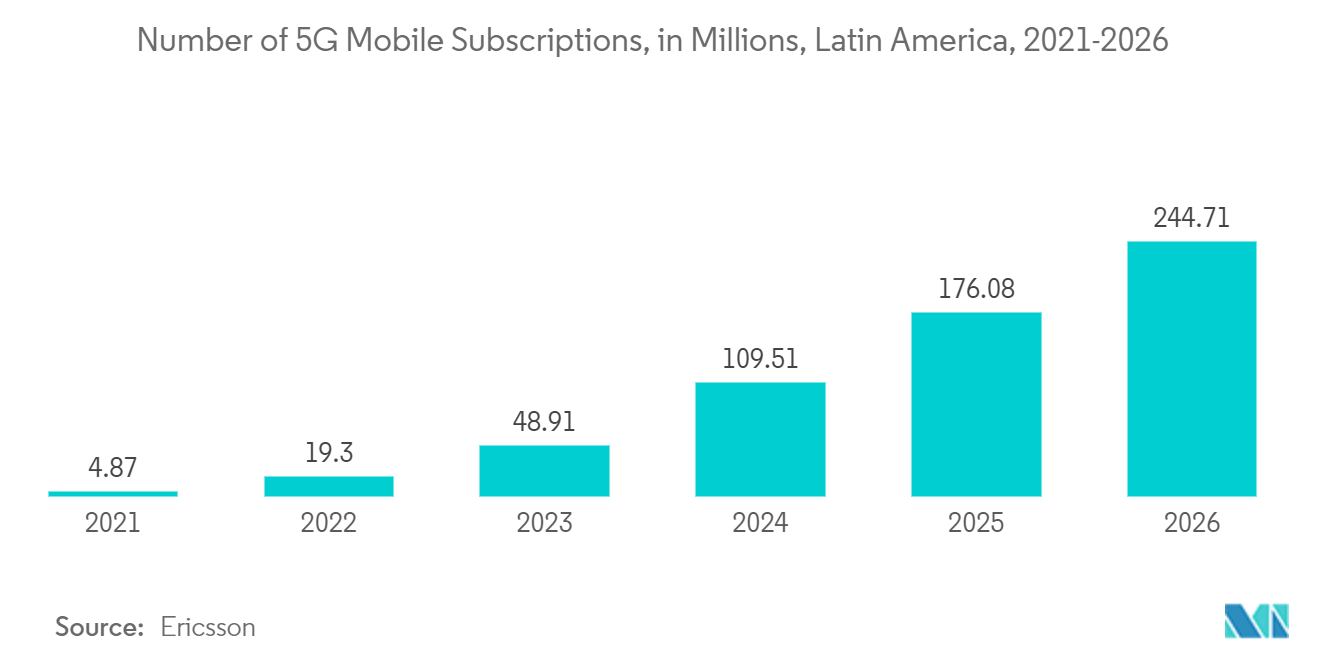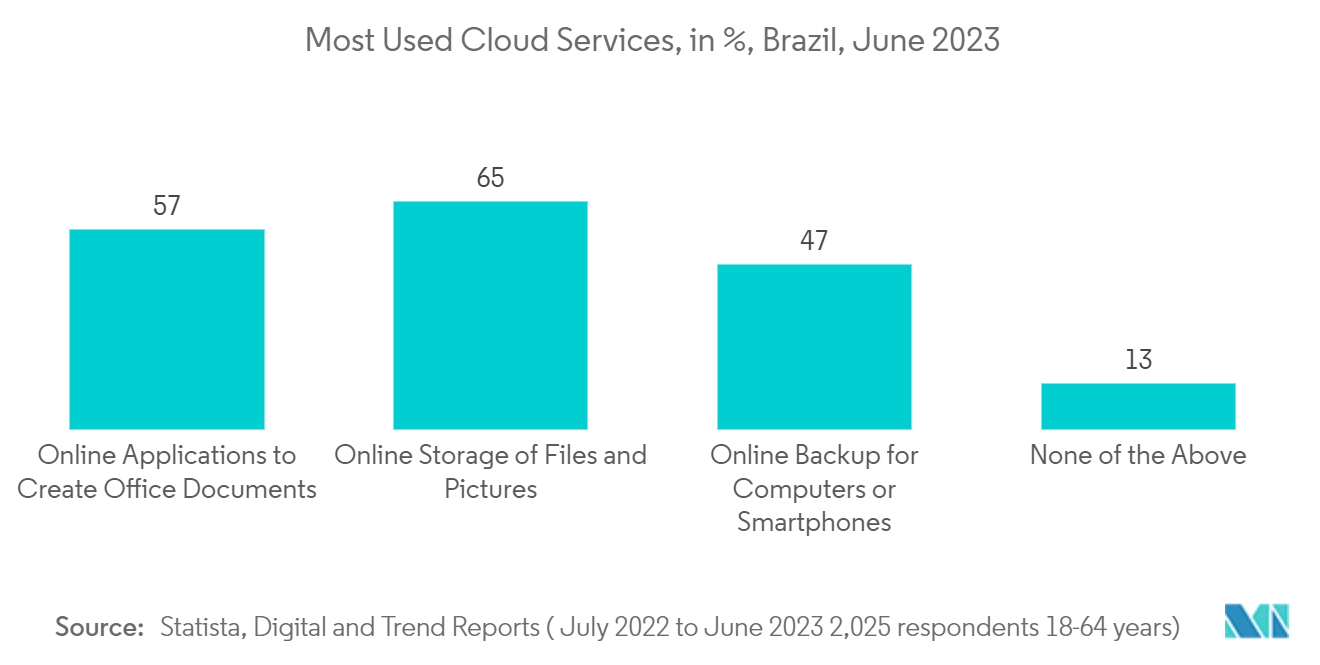Market Trends of South America Data Center Power Industry
The IT & Telecom Segment is Expected to Hold Significant Share
- Over the past decade, South America has made considerable strides in developing infrastructures, although the status of its digital ecosystem varies. Although general penetration of fixed broadband is low, significant efforts are now being made in the different countries across the region to deploy fiber optic networks.
- The Chilean government has substantially invested in fiber-optic networks, with connections reaching more than 90% of the population. As a result, most Chilean families now have access to high-speed internet services, enabling them to benefit from the expanding range of available digital services.
- Regarding 5G connectivity, all Brazilian municipalities with at least 200,000 residents will have a 5G network by July 31, 2026, with at least one antenna. Brazil's 5G spectrum auction held in October 2021 raised about USD 8.5 billion. By 2035, introducing 5G in Brazil may have a USD 1.2 trillion economic impact and a USD 3 trillion productivity boost. With increasing network traffic, the data center construction is increasing, leading to demand for major power backup solutions.
- While most traditional data centers use alternating current (AC) power distribution systems, telecom data centers run mainly on direct current (DC) power, such as UPS and PDU. Telecom data centers get power from the utility in the AC and convert it to DC using rectifiers, which also charge their batteries.
- South American data centers' average power usage efficiency is 1.48 PUE, indicating an efficient efficiency level. This requires major power sources such as backup generators and UPS to maintain the electricity backup.

Brazil to Hold Significant Growth
- Brazil's digital economy demonstrates the potential for continued growth over the medium and long term. The Brazilian government plays a significant role in developing local data center infrastructure. According to the government, the country's General Data Protection Act (LGPD) was implemented in August 2020. It is expected to force many enterprises to migrate their cloud access to private networks and update their encryption services to extend user data protection.
- Around 10-15% of data is created and processed outside centralized data centers or the cloud. However, the number is expected to surpass 60-70% by 2025, a global trend also expected in Brazil. Such factors will lead to significant power backup demand for generators, PDUs, and UPS.
- Microsoft, Amazon Web Services, and Google are major cloud service providers in Brazil. These cloud service providers will collocate their workloads with existing colocation operators and collaborate with the new market entrants to provide cloud-based services.
- In Brazil, Sao Paulo is one of the most connected cities, with a high availability of digital business and financial centers, making the city a favorable location for facility development. The region is also witnessing a boost in investments in the market due to the Brazilian data localization law, Lei Geral de Protecao de Dados Pessoais (LGPD), which passed some regulations for storing the data generated within the country.
- In March 2021, Microsoft announced new availability zones in São Paulo as part of its “More Brazil” plan. In addition, the company planned to expand its zone coverage by the end of 2021.
- Regarding data center construction, in December 2021, Scala Data Centers announced its plan to build two hyperscale data center facilities in Brazil. The SP4 and SP5 facilities will have 18 MW and 9 MW power capacity and are expected to work by April 2022 and September 2022, respectively. Overall, the above factor relates favorably to the demand for power solutions.


